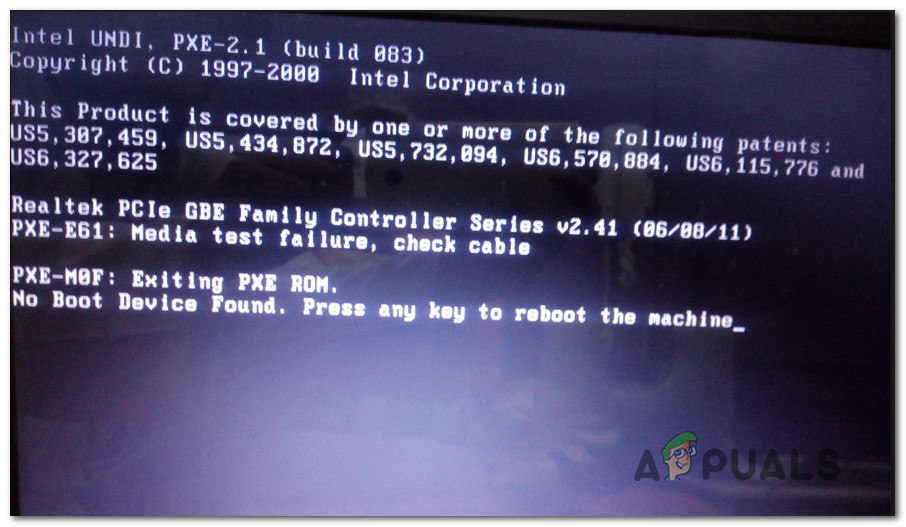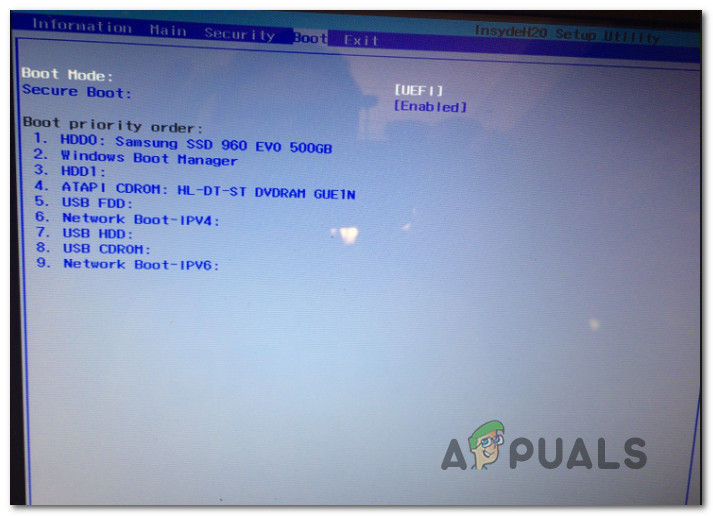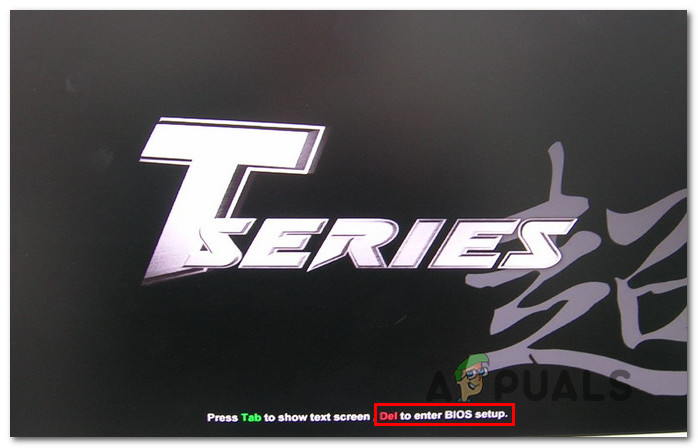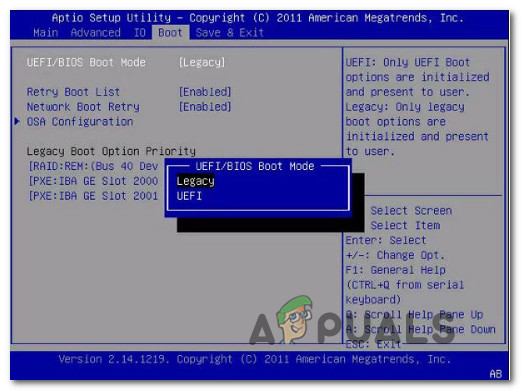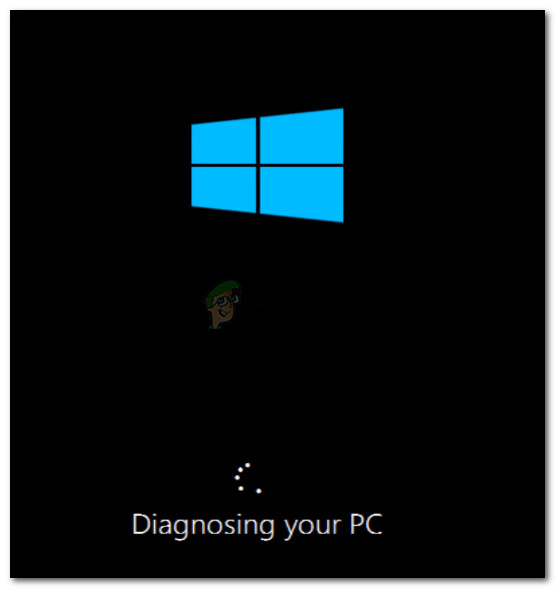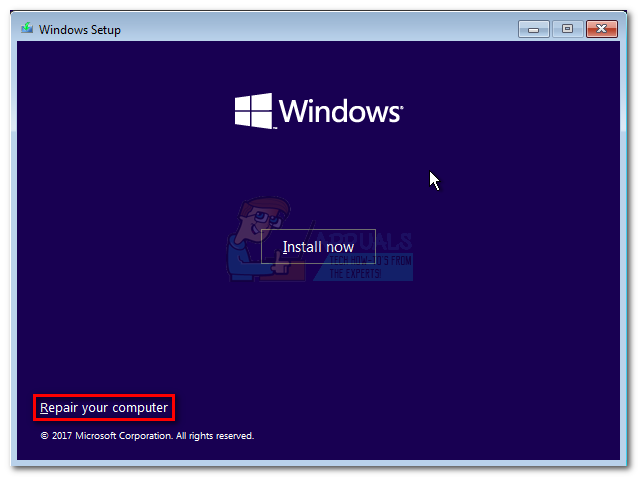What is causing the cloned SSD to fail the booting sequence?
We investigated this particular issue by looking at various user reports and the repair strategies that most affected users have deployed to get the issue resolved. Based on our investigations, there are several different culprits that are known to trigger this particular error message: If you’re struggling to resolve this particular error message, this article will provide you with several troubleshooting guides that other users in a similar situation have successfully used to force the cloned SSD to boot normally. Keep in mind that not every potential fix will be applicable to your current scenario. Because of this, we advise you to follow the methods below in the order that they are presented. One of them is bound to resolve the issue in your particular scenario.
Method 1: Setting the correct Drive to boot from
One of the most common reasons that will make a cloned SSD unbootable is the fact that the user has forgotten to set the correct drive to boot from. If this scenario is applicable, a trip to the BIOS / UEFI settings and changing the boot priority accordingly should resolve the issue immediately. Here’s a quick guide on how to do this: If you’re still unable to boot from your cloned SSD, move down to the next method below.
Method 2: Changing the SATA cable used to connect the cloned SSD (if applicable)
We have seen several confirmed reports where this particular issue was occurring due to a faulty SATA cable or a faulty SATA port. If you’re suspecting that the issue might be caused by a connection problem, it’s recommended to try changing the SATA cable and the SATA port (if applicable) and see if the issue is still occurring. And since you’ll open the case, it’s also worth a shot to disconnect any non-essential from the power supply just to make sure that the power supply gives the SSD enough power.
Method 3: Remove / Wipe the previous drive
Several cloning utilities including Samsun’s Magician will also copy the drive’s uniques ID, which ends up confusing the system. Since it won’t know where to boot from, it will likely make only one of the drives usable. Fortunately, you can resolve this particular issue by simply removing the source disk (the one that you cloned). If your system is able to boot from the cloned SSD, you’ll need to wipe the original drive in the event that you want to use both on the same PC configuration.
Method 4: Disabling Secure Boot
Secure boot is a security standard developed by members of the PC industry in order to ensure that the PC will only boot with the software trusted by Original Equipment Manufacturers (OEMs). As you might imagine, this can create problems with cloned SSDs since the migration software that you used might copy over some unique IDs which might be regarded as a security breach by the secure boot feature. In this case, you have little choice but to disable secure boot. Here’s a quick guide on how to do this:
Method 5: Changing the BIOS Boot mode
If you’ve cloned a GPT HHD to MBR SSD or an MBR HDD to GPT SSD, keep in mind that it’s necessary to also change the boot mode from UEFI to Legacy or vice versa in order for the boot sequence to be successful. Otherwise, the SSD drive will not boot after the cloning process is complete. If this particular scenario is applicable, you can resolve the issue by changing the boot mode. Here’s a quick guide on how to do this:
Method 6: Running the Windows Recovery Environment utility
The Windows Recovery Environment (WinRE) is capable of fixing a lot of common scenarios where the drive becomes unbootable. Several affected users have reported that they were allowed to boot normally after they repaired the Windows installation from the cloned SSD using WinRe. But keep in mind that in order to perform this procedure, you’ll need to get a hold a Windows Installation media with your operating system version. You can follow this article (here) for Windows 7 or this one (here) for Windows 10 to create an installation media if you don’t have one. Here’s a quick guide on how to run the Automatic Repair utility: If you’re still unable to boot from your cloned SSD drive, move over to the next method below.
Method 7: Running the Bootrec.exe utility
If WinRE was unable to resolve the booting sequence of your cloned SSD drive, you might be able to do it manually by using Bootrec.exe via Command Prompt. This built-in Microsoft utility is capable of fixing the master boot record, the boot sector, and the boot configuration data. All of these three items can be affected during the migration process. Note: Similar to Method 6, you’ll need to get a hold a Windows Installation media with your operating system version. You can follow this article (here) for Windows 7 or this one (here) for Windows 10 to create an installation media if you don’t have one. If you don’t have one, you can also force the Startup Recovery menu to appear by forcing three consecutive startup interruptions. Here’s a quick guide on running the Bootrec.exe utility:
Samsung 990 Pro SSD: Could be the First Consumer PCIe 5.0 SSD from the Korean…Fix: Windows 11 Won’t Boot After Enabling Secure BootFix: Windows stuck on BOOT Screen after installing new SSDFix: Windows 10 Won’t Boot
